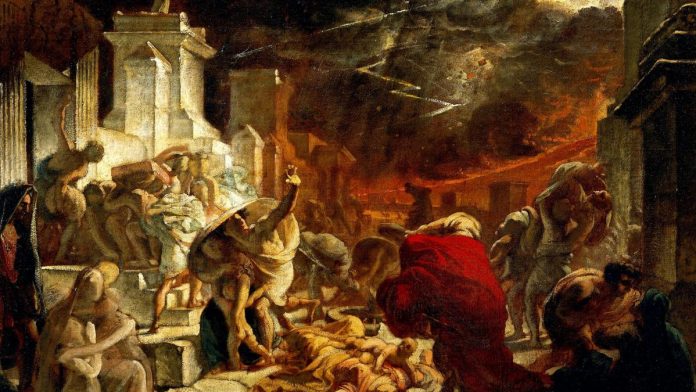
From the great eruption of Vesuvius that destroyed in the year 79 ad, the cities of Pompeii, Herculaneum and other places in Naples, we are informed fairly well. Because the Roman Senator Pliny the Younger (61/62-113/15) has described in a letter to the state enjoyed and historian Tacitus in detail the death of his uncle, Plinius Secundus (Pliny the Elder, 23/24-79), which took place in the attempt to save people from the disaster, at Stabiae “dense Smoke” to the death. To on 24. August of the year 79 have occurred. A sensational discovery in the ruins of Pompeii, however, can indicate that the date of the letter handed down, is wrong.
In the Remains of an ancient site in Pompeii, archaeologists found recently in the memorable Graffito. A unknown worker who participated in the construction of a house, “16. The day before the Kalends of November,“ noted. That would be according to Roman calendar the 17. October (because of the 1. November was one), as the Director of the excavation, Massimo Osanna, is explained – and, therefore, more than two months after the date, the day of the disaster, adopted date. The Eruption could be a week later, to happen, to the 24. October.
Because coal is a highly volatile write material, must come the inscription of the year in the ash and Lava of the volcano, the city buried. In order for the trailer to win the argument that Pompeii and Herculaneum were destroyed in the height of summer, but in autumn, a weighty Argument.
had Already been made earlier by Pliny the Younger, traditional date, doubt, loud. Because since the 19th century. Century, the current excavations were also the remains of chestnuts and pomegranates to light, fruits so commonly harvested only in the autumn. But the authority of the written Tradition stand against it.
In the Text of the younger Pliny, who lived during the volcanic eruption, while in the case of his uncle, but not to the disaster area, accompanied, is from “nine days before the Kalends of September”. The Kalends marked in the Roman calendar the first day of the month. From the letters of Pliny have received numerous copies that have come through various stages from the middle ages to us as antique originals have not survived, of course.
The scientific critique of the text has a Version of the “Nonum kal. Septembres hora fere septima“ (at the 24. August, about the seventh hour) as a valid time set to the Admiral of the Imperial fleet of Misenum (Miseno), Plinius Secundus, “a cloud of unusual size” on the Vesuvius Region was reported. To immediately “have numerous four-Decker leak”, “and ascended even to a ship, to bring … many other people-help – the beautiful coastline was dense (by Fleeing) is populated.”
However, one of the numerous copyists, the written Tradition of the Pliny-anxious in the middle ages the hand of letters might have made a mistake. An important Argument for this interpretation of the senatorial historian Cassius Dio (163 – 229), dated in his “Roman history,” the volcanic eruption “against the fall”.
“today we are going to write may be one for the history books, because we date the eruption of the volcano on the second half of October”, evaluates already, Italy’s culture Minister, Alberto Bonisoli the Fund. Pompeii is the second most important tourist attraction in Italy after the Colosseum in Rome. In just the first eight months of this year, the excavation was one site of more than three million visitors.
you will find “world history” on Facebook. We are happy about a Like.
















